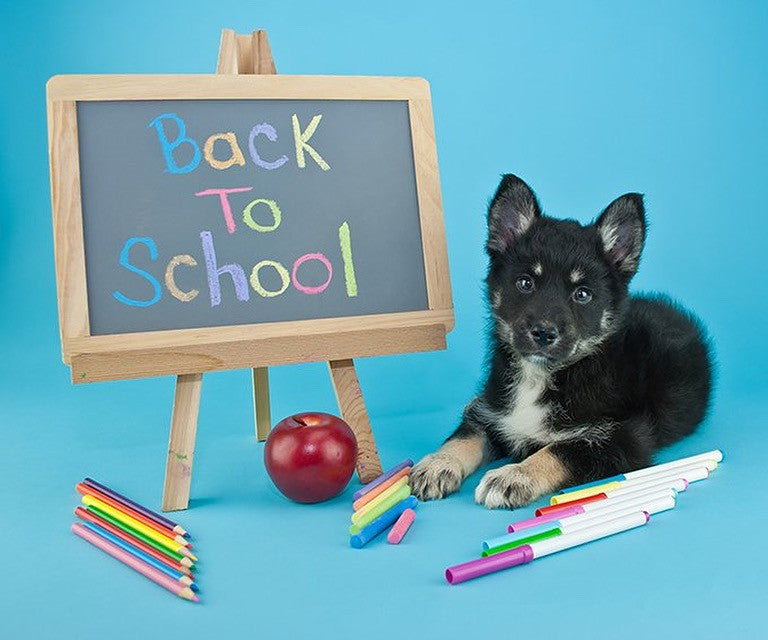
Back to School Blues: Helping Your Dog Adjust
Share
September always feels like a turning point. The holidays are over, mornings get cooler, and families slip back into their school-year routines. Children head off with packed lunches and book bags, parents rush to work, and suddenly the house that was noisy and lively all summer is silent. For dogs, that change can feel strange — even unsettling.
Throughout the holidays, many dogs are surrounded by constant activity. Kids are playing in the garden, families are home for longer stretches, and walks often happen at irregular, spontaneous times. Then, almost overnight, it all stops. For some dogs this is no big deal, but for others it can trigger stress and boredom. They may whine when the family leaves, chew things they shouldn’t, or spend the day pacing and waiting by the door.
One of the best ways to ease this transition is to rebuild a routine your dog can rely on. Dogs don’t understand the school calendar, but they do understand patterns. Taking them for a short walk before everyone heads out, feeding them at the same times each day, and keeping departures calm and consistent all help signal that everything is under control. Even something as simple as a quick game of fetch before school can release energy and leave your dog more settled when the house goes quiet.
The long hours alone can be a challenge, particularly for younger or more energetic dogs. Enrichment toys are a brilliant way to keep them busy. A puzzle feeder stuffed with their favourite treats, a durable chew, or a rotating toy collection gives them something to focus on rather than worrying about where the kids have gone. Some owners even leave on the radio or TV for background noise, which can make the house feel less empty.
Of course, the reunion at the end of the day matters too. When children rush back in from school, setting aside even fifteen minutes for a play session or cuddle can reassure your dog that they’re still part of the family’s rhythm. For kids, it’s a chance to learn responsibility as well: homework may be waiting, but so is the dog who’s been counting down the hours until their return.
Most dogs will adjust quickly once they understand the new routine, but if the stress doesn’t ease, it’s worth seeking advice. Persistent anxiety or destructive behaviour might need a little extra support from training or even a behaviourist.
The back-to-school period is a big adjustment for the whole household, but it doesn’t have to leave your dog feeling left out. With consistency, enrichment, and plenty of affection at the right times, the quieter days of autumn can be just as happy as the lively summer weeks. It’s not about replacing the fun of the holidays, but about giving your dog new patterns to rely on — and plenty of love to look forward to when the school bell rings at the end of the day.
